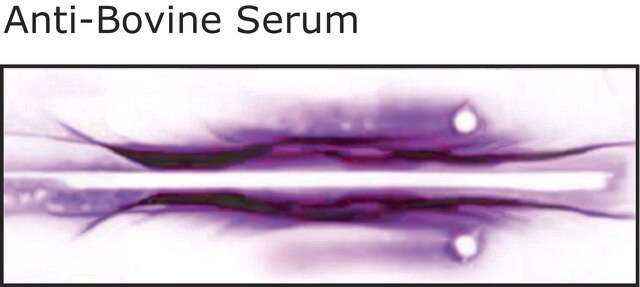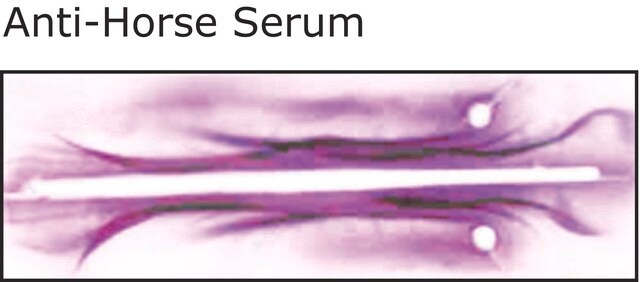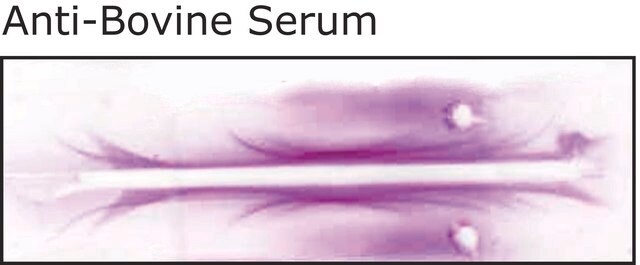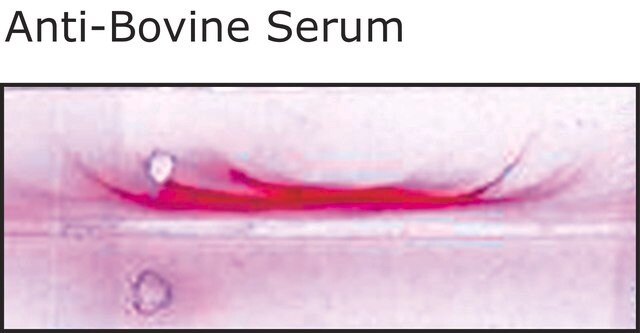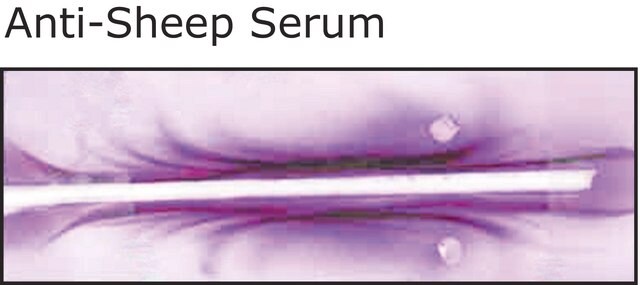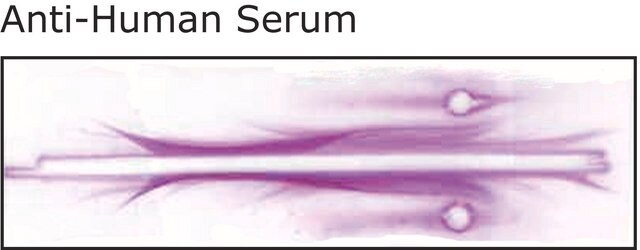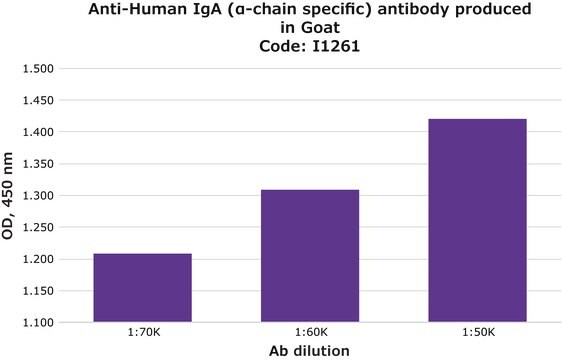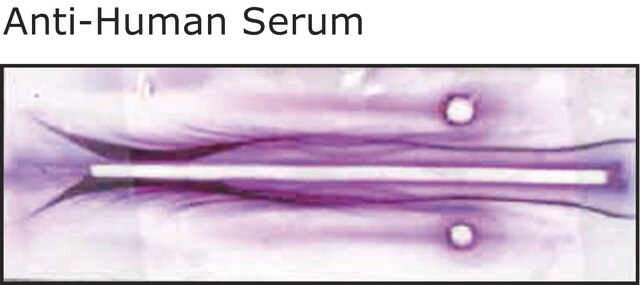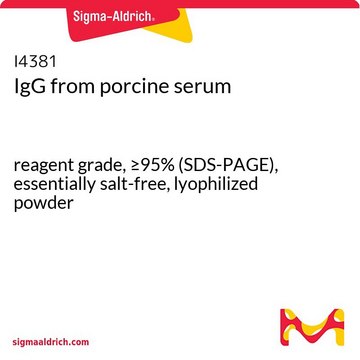Wszystkie zdjęcia(1)
Kluczowe dokumenty
P3164
Anti-Pig Serum antibody produced in rabbit
whole antiserum
Synonim(y):
Anti-Serum, pig
Zaloguj sięWyświetlanie cen organizacyjnych i kontraktowych
About This Item
Polecane produkty
pochodzenie biologiczne
rabbit
Poziom jakości
białko sprzężone
unconjugated
forma przeciwciała
whole antiserum
rodzaj przeciwciała
primary antibodies
klon
polyclonal
zawiera
15 mM sodium azide
reaktywność gatunkowa
pig
metody
immunoelectrophoresis: suitable
Warunki transportu
dry ice
temp. przechowywania
−20°C
docelowa modyfikacja potranslacyjna
unmodified
Opis ogólny
Guinea pig serum is highly enriched with L-asparaginase activity. This L-asparaginase activity imparts inhibitory or anti-lymphoma effects to pig serum.
Specyficzność
Strong reactivity with normal pig serum has been determined.
Zastosowanie
Anti-Pig Serum antibody produced in rabbit has been used in differential staining.
Anti-Pig Serum antibody produced in rabbit has been used in the dual differential staining of blastocysts to assess the number of inner cell mass (ICM) cells and trophectoderm (TE) cells.
Jakość
The antiserum has been treated to remove lipoproteins.
Postać fizyczna
Rabbit Anti-Pig Serum is provided as a liquid containing 0.1% sodium azide as preservative.
Przechowywanie i stabilność
For extended storage, the solution may be frozen in working aliquots. Repeated freezing and thawing is not recommended. Storage in "frost-free" freezers is not recommended. If slight turbidity occurs upon prolonged storage, clarify the solution by centrifugation before use.
Oświadczenie o zrzeczeniu się odpowiedzialności
Unless otherwise stated in our catalog or other company documentation accompanying the product(s), our products are intended for research use only and are not to be used for any other purpose, which includes but is not limited to, unauthorized commercial uses, in vitro diagnostic uses, ex vivo or in vivo therapeutic uses or any type of consumption or application to humans or animals.
Ta strona może zawierać tekst przetłumaczony maszynowo.
Nie możesz znaleźć właściwego produktu?
Wypróbuj nasz Narzędzie selektora produktów.
Kod klasy składowania
13 - Non Combustible Solids
Klasa zagrożenia wodnego (WGK)
WGK 1
Temperatura zapłonu (°F)
Not applicable
Temperatura zapłonu (°C)
Not applicable
Środki ochrony indywidualnej
Eyeshields, Gloves, multi-purpose combination respirator cartridge (US)
Wybierz jedną z najnowszych wersji:
Masz już ten produkt?
Dokumenty związane z niedawno zakupionymi produktami zostały zamieszczone w Bibliotece dokumentów.
Klienci oglądali również te produkty
Koji Yoshioka et al.
Biology of reproduction, 66(1), 112-119 (2001-12-26)
We evaluated the in vitro development of porcine zygotes that were cultured in a novel culture medium, porcine zygote medium (PZM), under different conditions and compared to in vivo development. The viability of these zygotes to full term after culture
Z Macháty et al.
Biology of reproduction, 59(2), 451-455 (1998-08-01)
In vitro development of early porcine embryos under different culture conditions was evaluated and compared to in vivo development. First, one- and two-cell embryos were collected and cultured individually in 20- microl drops under 5% CO2 in air for 4
Evidence that the L-Asparaginase Activity of Guinea Pig Serum is responsible for its Antilymphoma Effects
Broome JD
Nature, 191, 1114-1115 (1961)
Z Macháty et al.
Biology of reproduction, 57(5), 1123-1127 (1997-11-22)
Thimerosal (200 microM) triggered Ca2+ oscillations in 56 of 56 mature porcine oocytes. The Ca2+ oscillations were blocked by the sulfhydryl-reducing agent dithiothreitol (DTT), thus supporting the hypothesis that thimerosal acts by oxidizing critical sulfhydryl groups on intracellular Ca2+-release proteins.
Tao Lin et al.
Reproductive toxicology (Elmsford, N.Y.), 75, 96-109 (2017-12-17)
In this study, we used a pig model to investigate the effects of α-solanine (a natural toxin found mainly in potato sprouts) on oocyte maturation, quality and subsequent embryonic development. We found that α-solanine (10 μM) disturbed meiotic resumption and increased
Nasz zespół naukowców ma doświadczenie we wszystkich obszarach badań, w tym w naukach przyrodniczych, materiałoznawstwie, syntezie chemicznej, chromatografii, analityce i wielu innych dziedzinach.
Skontaktuj się z zespołem ds. pomocy technicznej